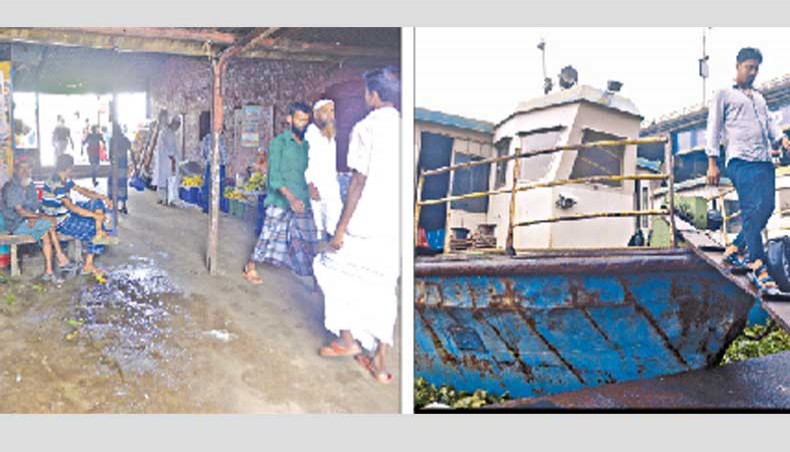Road traffic turns unwieldy as rail, waterways underused
Dhaka’s railway and waterway networks are underused and bear marks of negligence on the part of the authorities concerned in making them popular.
If fully utilised, experts think, they could be a major solution to the chaotic traffic situation on roads in the capital.
They suggest that the government should give priority to using the railways and waterways, which are safer and easier transportation modes.
They are also for putting more public transports into service before investing in mega infrastructural projects.
The city’s traffic situation is getting more and more knotty every day, with people being forced to spend their valuable working hours on roads due to long tailbacks.
People mainly use roads when there are also commuter trains in service in Dhaka and its adjacent areas and waterbus service on Badamtoli-Gabtoli route.
But because of bad infrastructure and lack of other facilities, these two modes of transportation are not popular among the commuters.
The city’s railway stations are in a rundown condition. The Gendaria railway station lacks boundary fencing.
So, people continue to cross the tracks risking their lives, with no railway staff nearby to prevent them from doing so.
At Tejgaon station, the
approach road is in a very poor condition while the station’s signboard is very hard to find out.
At Badamtoli terminal, at 2:00pm on Tuesday, Bangladesh Inland Water Transport Corporation’s eight water buses were found idly resting on water.
The corporation staff lament that under the service, a waterbus starts at 9:00am and another at 5:00pm daily, each with the capacity to accommodate 88 passengers, but the number of passengers hardly crosses 10.
The poor condition of the approach roads to the waterway stations holds back people from availing the service, they say.
Mubasshar Hussain, former president of Institute of Architects Bangladesh, tells New Age that Dhaka city has an extended network of waterways around it but the network remains underused for negligence of the policymakers.
He thinks that mega projects for mass and bus rapid transits and elevated expressways will mainly serve the interest of private vehicle owners and high income group people.
Bangladesh University of Engineering and Technology’s urban and regional planning department professor Sarwar Jahan blames irregular time schedule for people backing away from using waterbus service.
For railways, he demands more tracks and modern signalling system to improve its service.
He suggests that the government increase the number of public transports otherwise it will not be possible to tackle the situation with only MRT or elevated expressways.
Dhaka Transport Coordination Authority executive director Syed Ahmed admits that railways have been slightly neglected in the Revised Strategic Transport Plan (2015-2035).
‘If the passengers could reach the adjacent districts such as Mymensingh, Tangail, Narayanganj, Munshiganj Manikganj and Narsingdi in 20 to 30 minutes, people would not live in Dhaka city,’ he says.
He says it would then be possible to manage the city traffic with the existing transports, which are at present unmanageable.
He fears that if the authorities fail to improve waterbus service and clean the dirty water of the River Buriganga, commuters will not be interested to use the service.
Talking to New Age, he admitted that they did not discuss why the railways and waterways were not being used in full besides roads.
At present, a total of 16 pairs of commuter trains between Dhaka and Narayanganj and four pairs between Dhaka and Joydebpur are operating on weekdays.
According to the Revised Strategic Transport Plan (2015-2035), the Dhaka Metropolitan Area had a population of 9.3 million in 2011 when the greater Dhaka area, which consists of Dhaka, Gazipur, Manikganj, Munshiganj, Narayanganj, and Narshingdi, has 24.4 million or more residents.
Daily almost 15,000 people from Narayanganj and another 10,000 passengers from Gandaria, Fatullah and Chashara are coming to Dhaka using commuter trains.
In 2004, BIWTC first launched the waterbus service between Sadarghat and Gabtoli but was discontinued for a number of times amid lack of passengers. In 2013, the service resumed again.
News Courtesy: www.newagebd.net











